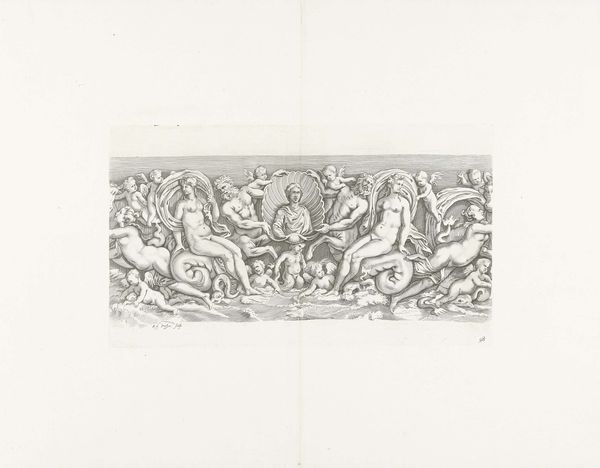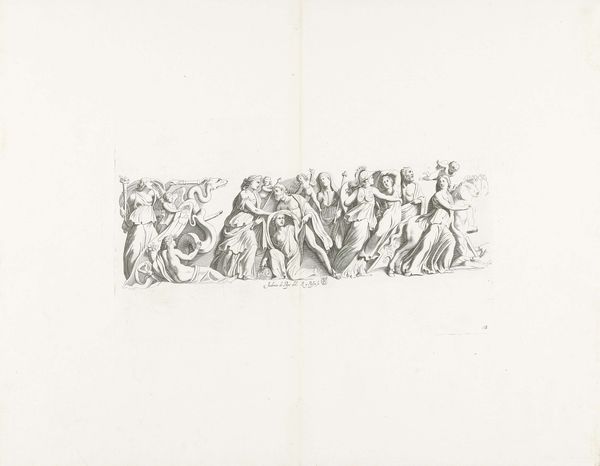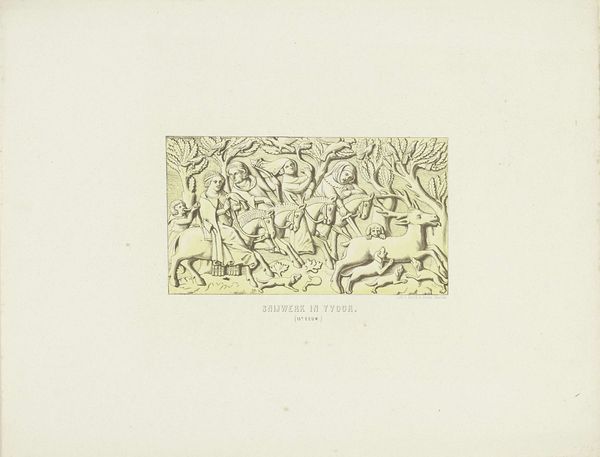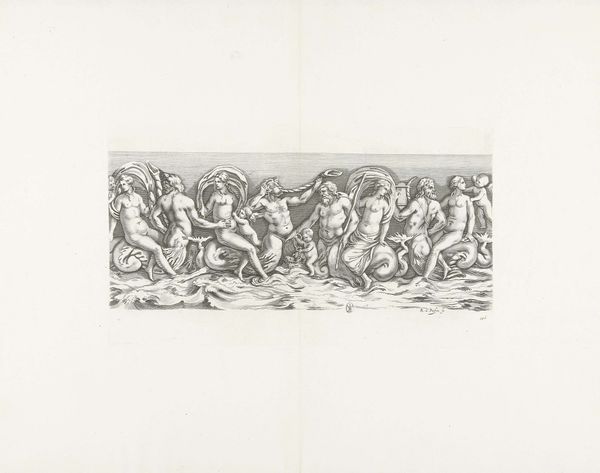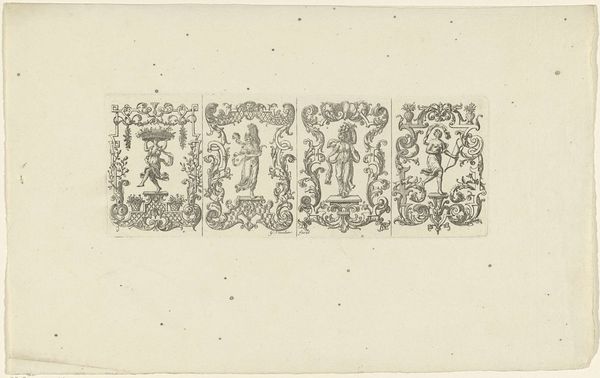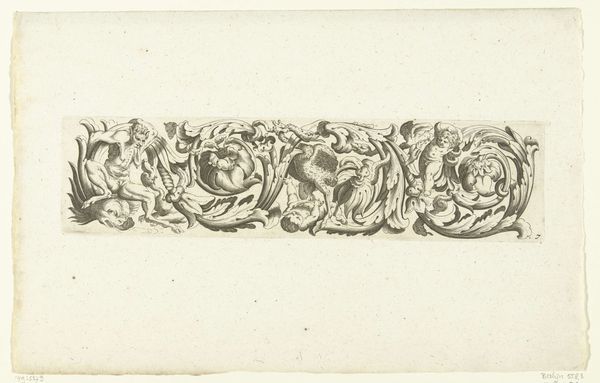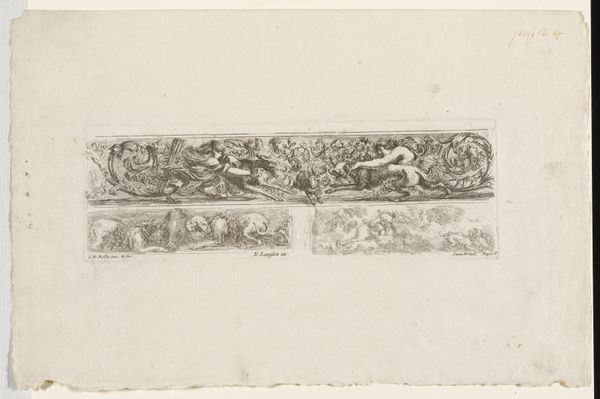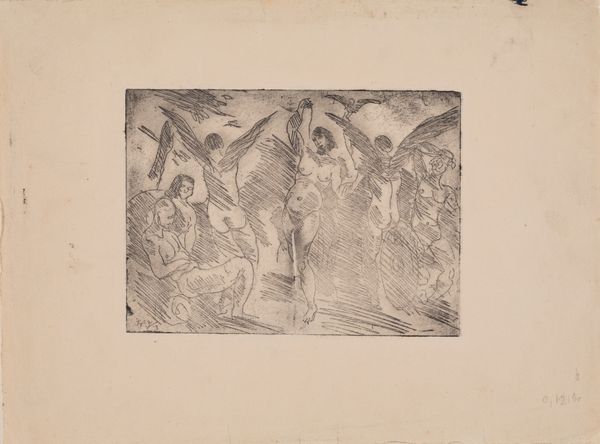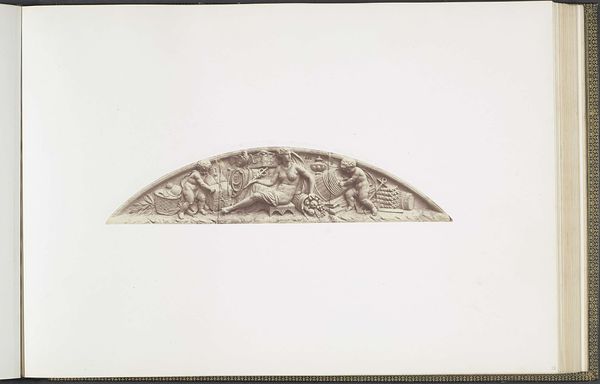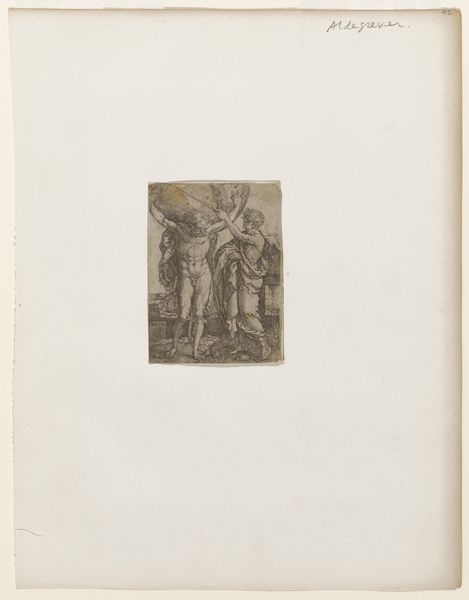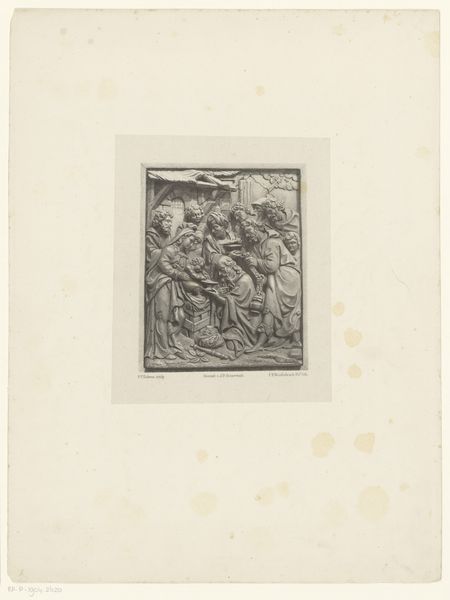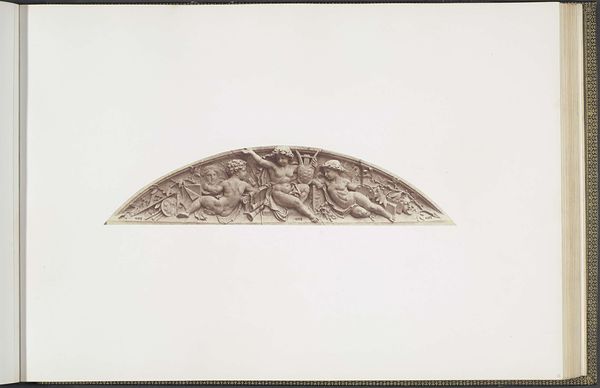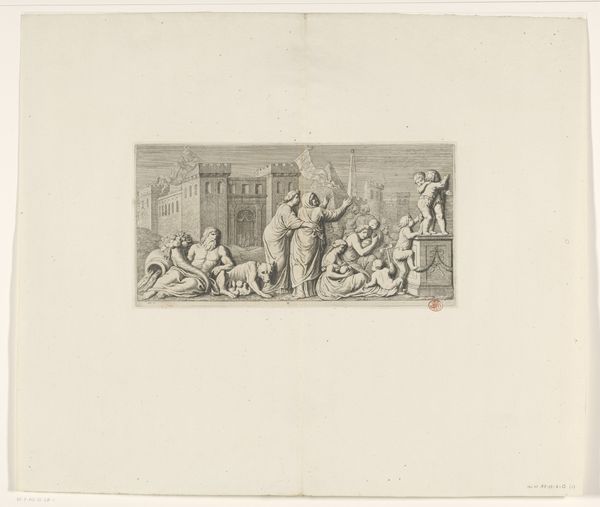
#
pencil drawn
#
amateur sketch
#
light pencil work
#
pencil sketch
#
incomplete sketchy
#
hand drawn type
#
pen-ink sketch
#
sketchbook drawing
#
pencil work
#
initial sketch
Dimensions: height 234 mm, width 432 mm
Copyright: Rijks Museum: Open Domain
Editor: This drawing by Reinier van Persijn, created around 1640, depicts a bas-relief of sea nymphs and gods. The scene feels very classical, almost like a rediscovered Roman carving, yet it's rendered in a light, sketchy style. What do you make of this piece? Curator: It's fascinating to see how classical themes were being reinterpreted in the 17th century. Prints like this played a vital role in circulating knowledge of antiquities. They weren't just aesthetic objects, but vehicles for intellectual exchange. Editor: So, it's not necessarily about artistic expression, but about documenting and sharing classical art? Curator: Precisely. Consider the role of the Rijksmuseum itself, where this work is housed. Museums create a particular framing of the past. How does placing this drawing in that context shape our understanding of 17th-century Dutch engagement with classical antiquity? Were they aiming for accurate reproductions or were they filtered through the lens of their contemporary artistic styles and ideologies? Editor: I see. So, even the act of drawing this relief, and then preserving the drawing in a museum, adds layers of meaning about how the past is viewed. Curator: Exactly! These drawings, readily available, allowed artists to study and reimagine these forms. This democratizing aspect of printmaking contrasts with the often elite culture that originally produced and possessed these classical artifacts. It raises interesting questions about power, access, and cultural capital. Editor: This makes me think about who got to engage with classical art and knowledge during this time and how the artist’s rendering democratized it for a broader audience. I learned so much about how images create and transfer power. Curator: I agree. Considering this artwork inside the social, cultural and institutional history gives us insightful views to understand more about 17th-century’s artwork production.
Comments
No comments
Be the first to comment and join the conversation on the ultimate creative platform.
